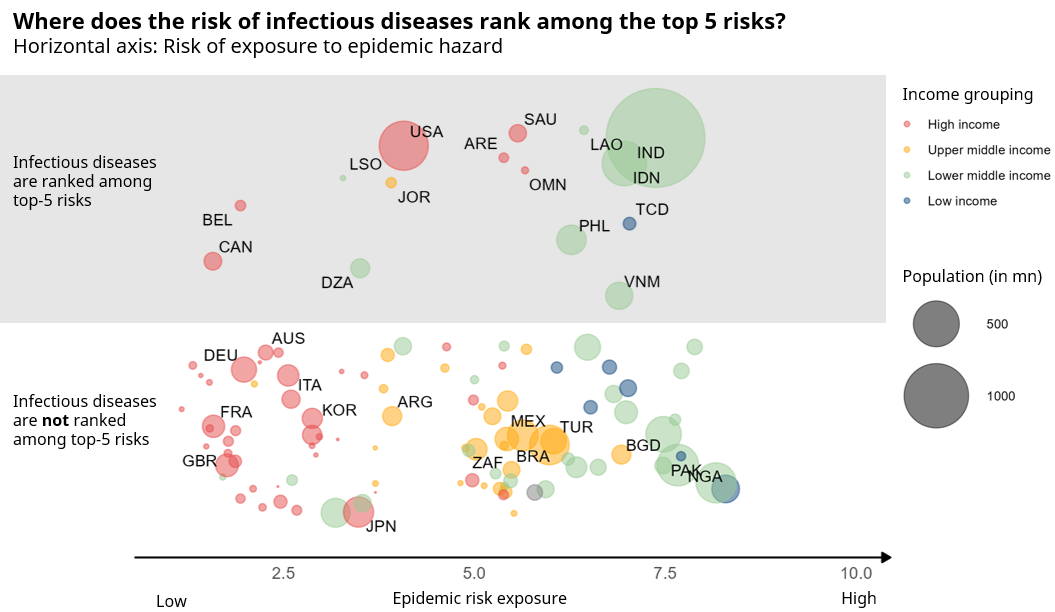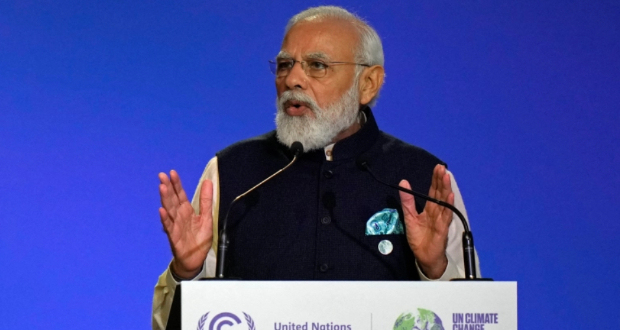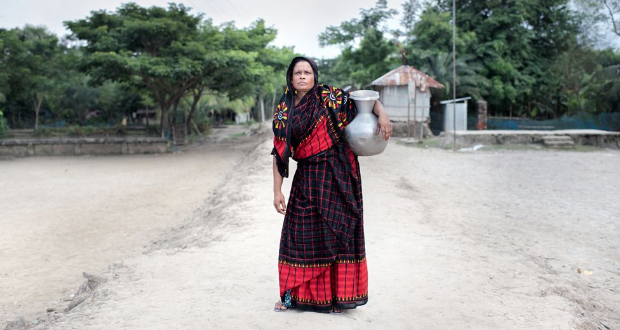What about health? Post-pandemic priority shifts
The COVID-19 pandemic and its consequences have largely vanished from headlines in most countries. Yet, its consequences are still running deep; during the COVID-19 pandemic years (2020-23), an estimated 28 million people died, more than what the historical trend for pandemics would have suggested. The pandemic significantly set back the global economy, and also adversely impacted the global fight against poverty. Exhausted from the pandemic response and recovery, public budgets are under pressure, with debt servicing among the least developed countries reaching all-time highs.
Given the numerous conflicts in different parts of the world, it does not seem surprising that health security and pandemic preparedness got pushed down the list of policy priorities. It is not merely a matter of attention; there are hard indicators for problems arising in a world with numerous and protracted violent conflicts. For example, about 131 million people will be forcibly displaced or become stateless in 2024—a figure that doubled since 2015.
Given the numerous conflicts in different parts of the world, it does not seem surprising that health security and pandemic preparedness got pushed down the list of policy priorities.
Nevertheless, pandemics are not less likely or less severe just because one has just happened a few years ago. The notion of pandemics as a “once-in-a-lifetime-event” has increasingly been debunked and replaced with the notion of “once-in-a-generation”.[1] Yet, risk perceptions are different, as is evident from the World Economic Forum’s Executive Opinion Survey. When asked, “Which five risks are the most likely to pose the biggest threat to your country in the next two years?”, only 16 countries out of the 103 surveyed ranked the risk from infectious diseases among the top five risks in the short run. It is disconcerting to see how de-coupled risk perceptions and likelihood of risk exposure have become so shortly after a global health crisis (see figure below).

Source: WEF Global Risks Report 2024, Annex C. Epidemic Hazard Index and population statistics from INFORM Risk Report 2024. World Bank income groupings. Methodology note: There are major shortcomings in the WEF’s dataset. For example, China, South Africa, and Russia are not covered – or at least no data was released. The survey was conducted between April and August 2023, i.e. the conflict in Gaza had not erupted. Analysis CPC Analytics.
For many executives in most countries, health security has been replaced with other priorities. However, in a world plagued with wicked problems, efforts to revive economies, address climate change, and tackle social inequalities must be addressed in tandem with health security. Inaction would be a terrifying option.
Protection against the next pandemic starts at home
For national policymakers, it should remain imperative to heed the lessons learnt from the COVID-19 pandemic. In this article, we want to highlight five key investment areas “at home”.
First, countries need to take proactive steps to prevent outbreaks. This can be achieved by either preventing the emergence of new diseases or minimising spillover events. More than half of known infectious diseases and up to 75 percent of new or emerging infectious diseases (EIDs) are zoonotic. This is further exacerbated by urbanisation, land use, deforestation, global trade and migration. Moreover, the global challenges of climate and health are increasingly interconnected. Exacerbating climate temperatures around the world will likely lead to the emergence and spread of infectious diseases. Addressing these factors as a part of pandemic preparedness is a way to prevent epidemics.
Exacerbating climate temperatures around the world will likely lead to the emergence and spread of infectious diseases.
Second, investment should boost timely detection and early containment of the outbreak at its source. Augmenting surveillance capabilities is paramount for early detection and response to emerging health threats. Leveraging technology and data-driven approaches can strengthen surveillance systems and enable real-time monitoring of disease trends, particularly at the human, animal, and environment interface, to facilitate timely interventions. Some countries have started to invest in cross-sector projects. India’s National One Health Mission is an example in this regard and was recently selected to receive a US$ 25 million grant from the Pandemic Fund to complement the national efforts.




